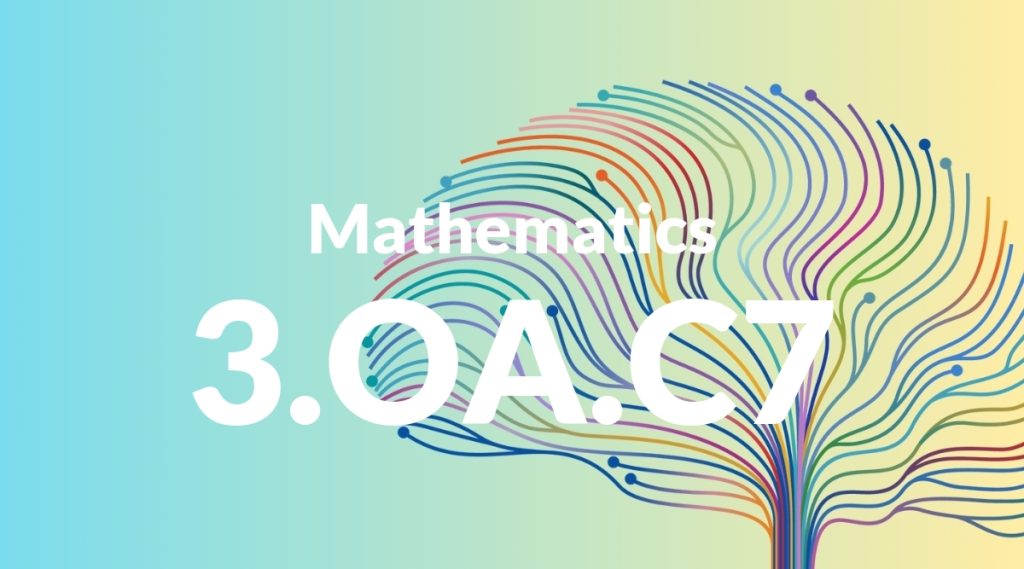Standard: 3.OA.C7 – Fluently multiply and divide within 100, using strategies such as the relationship between multiplication and division (e.g., knowing that 8 × 5 = 40, one knows 40 ÷ 5 = 8) or properties of operations. By the end of Grade 3, know from memory all products of two one-digit numbers.
Grade level: Grade 3
Subject: Mathematics
Domain: Operations & Algebraic Thinking
Teacher Overview
This standard focuses on helping students gain fluency in multiplication and division within 100. It’s important because it lays the groundwork for more advanced mathematical concepts and problem-solving skills in later grades. Mastery of this standard enables students to perform calculations quickly and accurately, which is essential for success in higher-level math. Students should have a solid grasp of addition and subtraction, and be comfortable with the concept of repeated addition. They should also be familiar with counting by multiples and have some exposure to basic multiplication and division.
Mastering this standard prepares students for more advanced multiplication and division problems, including multi-digit operations. It also sets the stage for understanding fractions, ratios, and other higher-level math concepts.
Common Misconception 1
A common misconception is that multiplication and division are unrelated. This is incorrect because multiplication and division are inverse operations. Understanding one helps in understanding the other.
Intervention 1
To remediate this misconception, use visual aids like arrays and number lines to show how multiplication and division are connected. For example, show that if 8 × 5 = 40, then 40 ÷ 5 = 8.
Common Misconception 2
Another misconception is that multiplication facts must be learned through rote memorization alone. This is not true; students can use strategies like skip counting, grouping, and the distributive property to make sense of multiplication facts.
Intervention 2
Encourage the use of strategies such as skip counting, grouping objects, and breaking down problems using the distributive property. These methods help students understand the reasoning behind multiplication facts, making them easier to remember.
Prerequisite Knowledge
Students should have a basic understanding of addition and subtraction, and be familiar with the concept of repeated addition as a foundation for multiplication. They should also be comfortable with counting by multiples (e.g., counting by 2s, 5s, and 10s).
Subsequent Knowledge
After mastering this standard, students will be able to tackle more complex multiplication and division problems, including multi-digit multiplication and long division. They will also be prepared to understand and apply these skills in real-world contexts, such as fractions and ratios.
Instructional Activities
- Use flashcards for quick recall of multiplication and division facts.
- Create arrays with objects to visualize multiplication and division.
- Practice word problems that involve real-world scenarios.
- Play math games that reinforce multiplication and division skills.
- Use number lines to demonstrate the relationship between multiplication and division.




